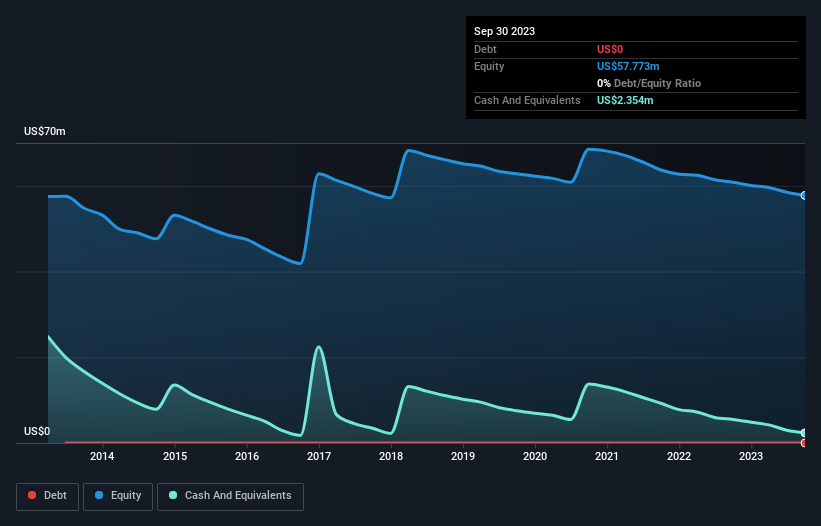We're Keeping An Eye On International Tower Hill Mines' (TSE:ITH) Cash Burn Rate
We can readily understand why investors are attracted to unprofitable companies. For example, although Amazon.com made losses for many years after listing, if you had bought and held the shares since 1999, you would have made a fortune. Nonetheless, only a fool would ignore the risk that a loss making company burns through its cash too quickly.
So, the natural question for International Tower Hill Mines (TSE:ITH) shareholders is whether they should be concerned by its rate of cash burn. For the purposes of this article, cash burn is the annual rate at which an unprofitable company spends cash to fund its growth; its negative free cash flow. The first step is to compare its cash burn with its cash reserves, to give us its 'cash runway'.
View our latest analysis for International Tower Hill Mines
When Might International Tower Hill Mines Run Out Of Money?
A company's cash runway is calculated by dividing its cash hoard by its cash burn. In September 2023, International Tower Hill Mines had US$2.4m in cash, and was debt-free. In the last year, its cash burn was US$3.1m. So it had a cash runway of approximately 9 months from September 2023. To be frank, this kind of short runway puts us on edge, as it indicates the company must reduce its cash burn significantly, or else raise cash imminently. You can see how its cash balance has changed over time in the image below.

How Is International Tower Hill Mines' Cash Burn Changing Over Time?
International Tower Hill Mines didn't record any revenue over the last year, indicating that it's an early stage company still developing its business. Nonetheless, we can still examine its cash burn trajectory as part of our assessment of its cash burn situation. It's possible that the 15% reduction in cash burn over the last year is evidence of management tightening their belts as cash reserves deplete. International Tower Hill Mines makes us a little nervous due to its lack of substantial operating revenue. We prefer most of the stocks on this list of stocks that analysts expect to grow.
Can International Tower Hill Mines Raise More Cash Easily?
Even though it has reduced its cash burn recently, shareholders should still consider how easy it would be for International Tower Hill Mines to raise more cash in the future. Companies can raise capital through either debt or equity. Commonly, a business will sell new shares in itself to raise cash and drive growth. By looking at a company's cash burn relative to its market capitalisation, we gain insight on how much shareholders would be diluted if the company needed to raise enough cash to cover another year's cash burn.
International Tower Hill Mines' cash burn of US$3.1m is about 2.4% of its US$129m market capitalisation. That means it could easily issue a few shares to fund more growth, and might well be in a position to borrow cheaply.
How Risky Is International Tower Hill Mines' Cash Burn Situation?
Even though its cash runway makes us a little nervous, we are compelled to mention that we thought International Tower Hill Mines' cash burn relative to its market cap was relatively promising. We don't think its cash burn is particularly problematic, but after considering the range of factors in this article, we do think shareholders should be monitoring how it changes over time. On another note, International Tower Hill Mines has 3 warning signs (and 2 which make us uncomfortable) we think you should know about.
If you would prefer to check out another company with better fundamentals, then do not miss this free list of interesting companies, that have HIGH return on equity and low debt or this list of stocks which are all forecast to grow.
Have feedback on this article? Concerned about the content? Get in touch with us directly. Alternatively, email editorial-team (at) simplywallst.com.
This article by Simply Wall St is general in nature. We provide commentary based on historical data and analyst forecasts only using an unbiased methodology and our articles are not intended to be financial advice. It does not constitute a recommendation to buy or sell any stock, and does not take account of your objectives, or your financial situation. We aim to bring you long-term focused analysis driven by fundamental data. Note that our analysis may not factor in the latest price-sensitive company announcements or qualitative material. Simply Wall St has no position in any stocks mentioned.
